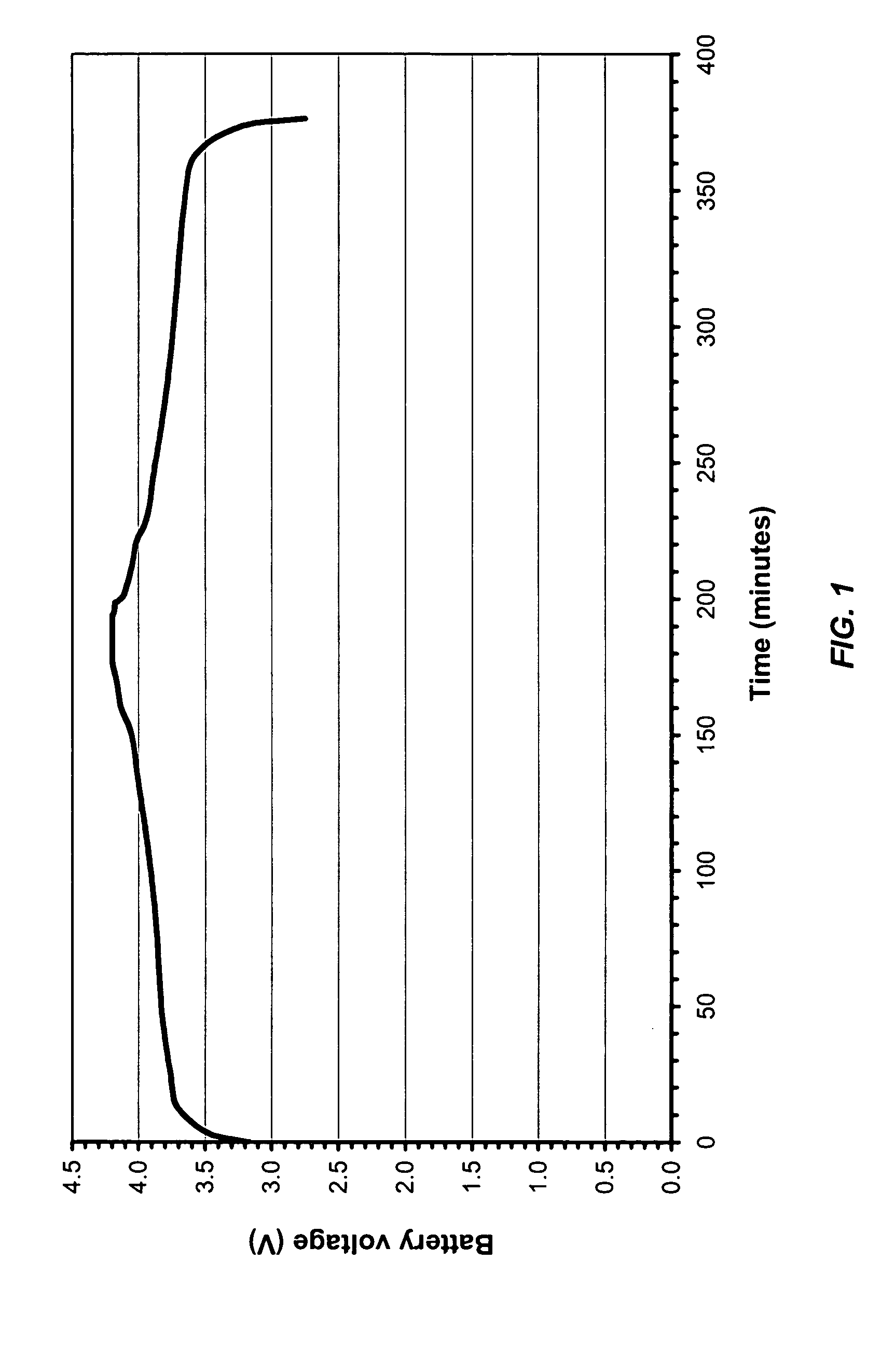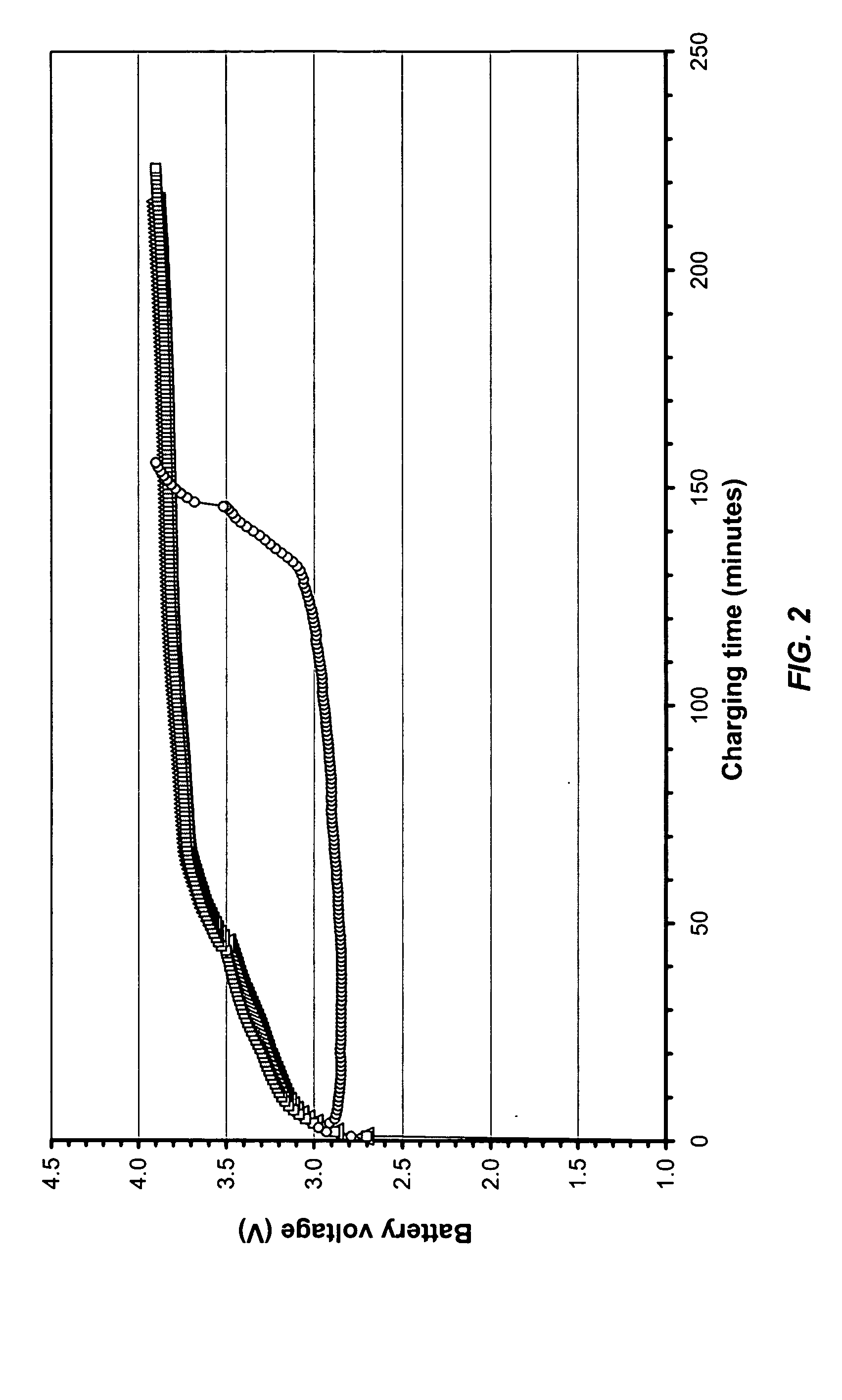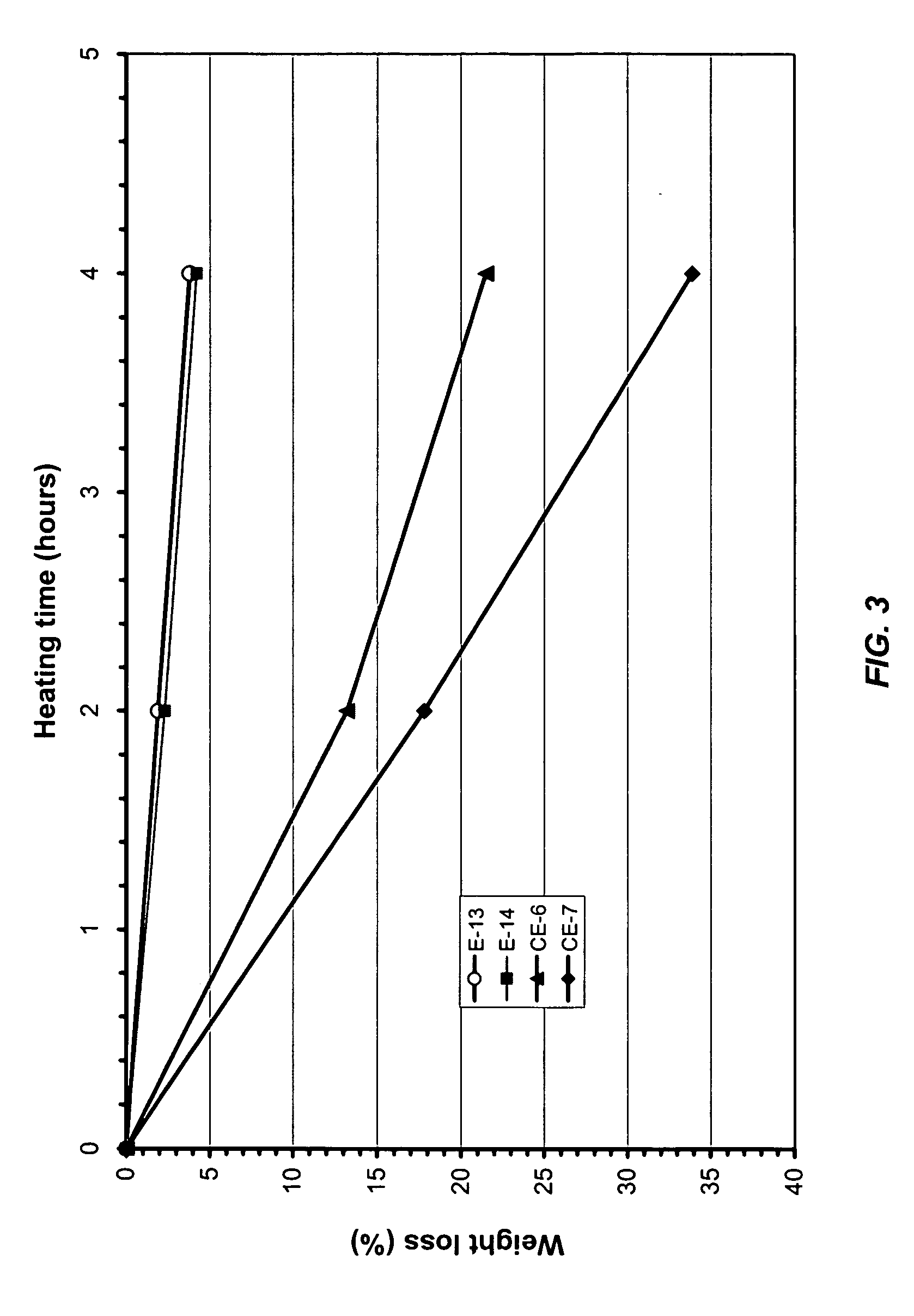Non-aqueous electrolytes having an extended temperature range for battery applications
a technology of non-aqueous electrolytes and battery applications, which is applied in the manufacture of non-aqueous electrolyte cells, cell components, and final products. it can solve the problems of inability to operate safely and the internal pressure of the battery being too high, so as to achieve lower freezing point, higher boiling point, and high ionic conductivity
- Summary
- Abstract
- Description
- Claims
- Application Information
AI Technical Summary
Benefits of technology
Problems solved by technology
Method used
Image
Examples
example 1
Preparation of Non-Aqueous Electrolyte
[0046] A non-aqueous electrolyte was prepared in a dry-box under nitrogen atmosphere which having less than about 1 ppm moisture. 3.0 g of anhydrous acetonitrile “AN” made by Sigma-Aldrich Corp. of Milwaukee, Wis., was mixed in a polypropylene bottle with 12.0 g of a blend of ethylene carbonate “EC” and diethyl carbonate “DEC” which has a 1:1 weight ratio made by Ferro Corp of Zachary, LA. Then, to the mixture was added 1.51 g of LiBF4 produced by Stella Chemifa Corp. of Osaka, Japan. After stirred for a while, LiBF4 dissolved completely and resulted in a clear and colorless electrolyte solution which can be expressed as 1.2M LiBF4EC / DEC / AN 2:2:1. The electrolyte is also summarized in Table 1 as Sample No. E-1.
Battery Preparation and Test
[0047] A lithium-ion rechargeable battery was assembled using a carbon negative electrode, a LiCoO2 positive electrode, and a commercial battery separator membrane. Into the assembled battery case, was inject...
examples 2-5
[0055] As summarized in Table 1, Sample Nos. E-2 through E-5, were prepared using the same materials as described in Example 1 except a substitution of 3-methoxypropionitrile “MPN” made by Sigma-Aldrich Corp. of Milwaukee, Wis., in place of AN, and also with different molar ratios of salts LiBF4 and LiPF6. The MPN was purified before use by distillation through a column under reduced pressure. Sample No. E-2 was made using LiBF4, No. E-5 LiPF6, Nos. E-3 and E-4 a mixture of LiBF4 and LiPF6 in a molar ratio of 3:1 and 1:3 respectively.
[0056] In the same manner as described in Example 1, two batteries were made for each electrolyte samples (Nos. E-2 through 5). Testing data of the resulting batteries are recorded in Table 2 under each electrolyte sample number. As indicated in the table, in all cases, batteries delivered reasonable capacity (33 mAh). In the cases of the electrolytes Sample Nos. and E-3 and E-4, which was made using a mixture of LiBF4 and LiPF6, in particular, Sample ...
example 6
[0058] This example is shown in Table 1 as Sample No. E-6 was prepared using the same materials as Sample No. E-2 except solvents were present in different weight ratios and also LiBF4 was present in a higher molar concentration of 2.0M.
[0059] In the same manner as described in Example 1, two batteries were made for the electrolyte samples No. E-6. Testing data of the resulting batteries are recorded in Table 2.
PUM
 Login to View More
Login to View More Abstract
Description
Claims
Application Information
 Login to View More
Login to View More - R&D
- Intellectual Property
- Life Sciences
- Materials
- Tech Scout
- Unparalleled Data Quality
- Higher Quality Content
- 60% Fewer Hallucinations
Browse by: Latest US Patents, China's latest patents, Technical Efficacy Thesaurus, Application Domain, Technology Topic, Popular Technical Reports.
© 2025 PatSnap. All rights reserved.Legal|Privacy policy|Modern Slavery Act Transparency Statement|Sitemap|About US| Contact US: help@patsnap.com



